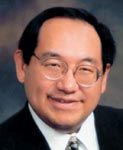Article
Big discrepancies seen between guidelines, glaucoma care
In medicine, as in many other professions, a gap exists between ideal or recommended behavior and what happens in the complex, messy "real world," where an infinite number of factors cause deviations from the desired goal. This is certainly true in glaucoma treatment, where various studies in recent years have shown that physicians fail to provide or document services such as optic nerve head photography as often as preferred practice guidelines recommend.

In medicine, as in many other professions, a gap exists between ideal or recommended behavior and what happens in the complex, messy "real world," where an infinite number of factors cause deviations from the desired goal. This is certainly true in glaucoma treatment, where various studies in recent years have shown that physicians fail to provide or document services such as optic nerve head photography as often as preferred practice guidelines recommend.


"They may or may not be appropriate for every single patient," he noted.
Also, there is the issue of updating the guidelines to remain in sync with prevailing attitudes and the latest research. According to the AAO Web site, PPPs are valid for 5 years from the time of publication, although they may be updated with revisions as needed. The Preferred Practice Patterns Committee Glaucoma Panel approved the primary open-angle glaucoma (POAG) guidelines in November 2003 with a limited revision. The limited revision pertained to central corneal thickness measurements as part of an initial evaluation, help with determining target IOP, and recommendations for repeating this measurement.
"The guidelines are evolving, and there are different guidelines for different purposes," said Louis B. Cantor, MD, director of the glaucoma service at Indiana University School of Medicine, Indianapolis. "Also, how we think about glaucoma and stage glaucoma is changing."
Most guidelines describe ocular hypertension or mild, moderate, or severe glaucoma and recommend that physicians follow certain steps associated with each stage.
"Those are typically based on staging the disease by the visual field," Dr. Cantor said.
"However, a lot of the nerve can be damaged before anything shows up in the visual field. So now as we start to think about glaucoma as an optic neuropathy and staging the disease via the optic nerve instead of the visual field, we run into problems with some of the older guidelines because we're not talking the same language. That's part of the reason why there's confusion out there," said Dr. Cantor, who is the Jay C. and Lucile L. Kahn Professor of Glaucoma Research and Education at Indiana's ophthalmology department.
Newsletter
Don’t miss out—get Ophthalmology Times updates on the latest clinical advancements and expert interviews, straight to your inbox.




